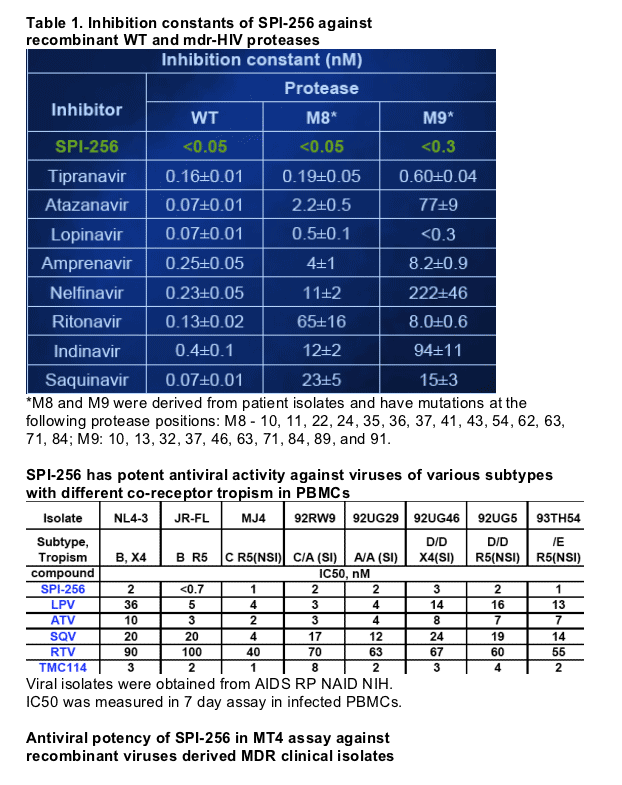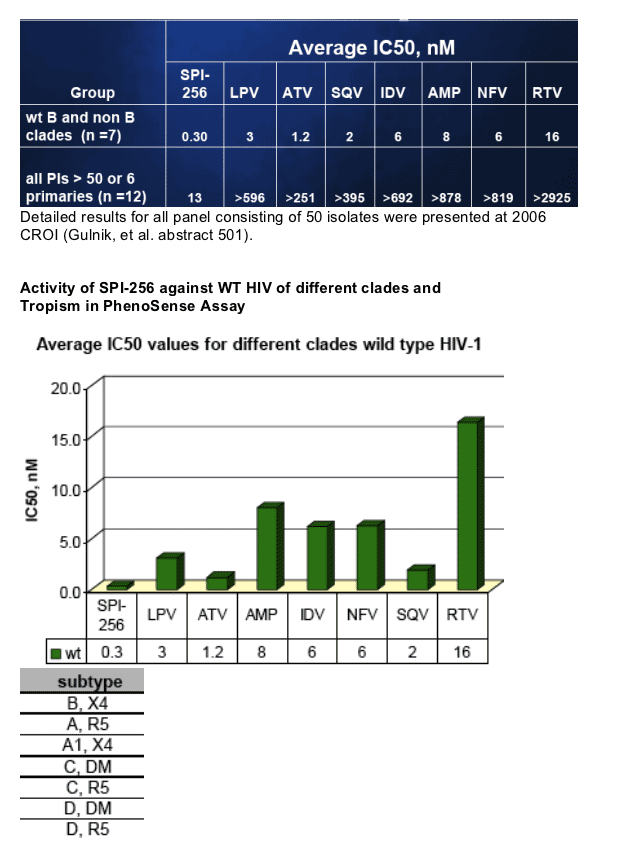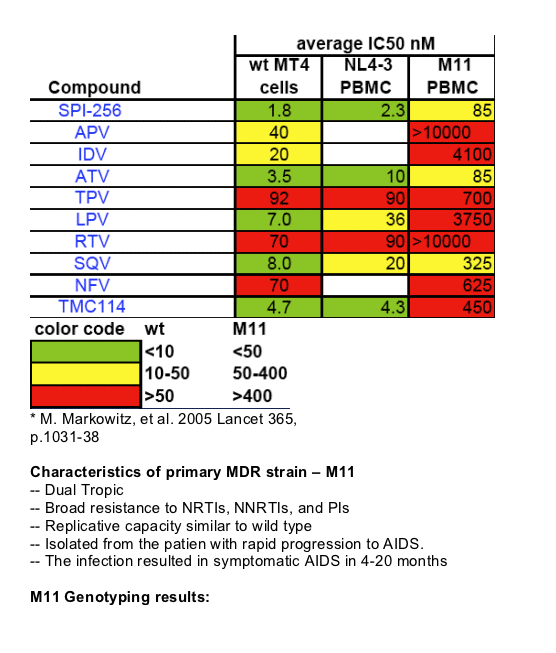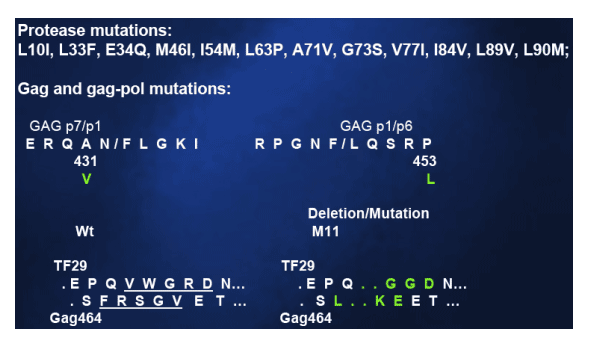 |
 |
 |
| |
Antiviral Activity of SPI- 256 Against Wild- Type and Multidrug Resistant Strains
|
| |
| |
Reported by Jules Levin
XV Intl HIV Drug Resistance Workshop
June 13- 17, 2006
Sitges, Spain
SV Gulnick1, E Afonina1, M Eissenstat1, H Yokoe1, B Yu1, M Martkowitz2, NT Parkin3, and JW Erikson1
1Sequoia Pharmaceuticals Inc, Gaithersburg, MD, USA
2Aaron Diamond AIDS Research Center, Rockefeller University, New York, NY
3Monogram Biosciences Inc, San Francisco, CA USA
Author Conclusions
- SPI- 256 is more potent than currently approved PIs against WT HIV- 1 in different in vitro assays.
- SPI- 256 maintains nanomolar potency against worst- case scenario MDR HIV isolates and is equipotent against viruses of different clades and co- receptor
tropism.
- Resistance to SPI- 256 requires accumulation of multiple primary PR mutations.
- SPI- 256 represents a potent new generation antiviral agent for first line and salvage therapy
Introduction
According to recent estimates over 75% of drug- experienced patients in North America harbor HIV that is resistant to one or more of the antiretroviral agents used in multi- drug 'cocktails'. Moreover, it has been estimated that drug- resistant HIV accounts for up to 12% of new infections. The number of reported cases of patients infected with mdr- HIV is rising steadily. Mutations within the protease gene that confer clinical drug resistance have emerged for all of the FDA- approved HIV protease (PR) inhibitors. The particular sequence and pattern of mutations selected by PIs is believed to be somewhat drug- specific and often patient- specific, but high level resistance is typified by multiple mutations in the protease gene which give rise to cross- resistance to all of the PIs.
New antiretrovirals are needed to treat existing drug resistant infections as well as to curb their transmission. Further still, there exists a need for inhibitors of HIV that can prevent or slow the emergence of drug resistance and the development of mdr- HIV in infected individuals.
Methods
Enzyme inhibition assay:
Recombinant wild type and mutant HIV PR were expressed in E.coli cells,
purified to apparent homogeneity by ion- exchange chromatography in 8 M
urea, and refolded at pH 7.0. Inhibition constants were determined using the
fluorogenic substrate ArgGlu(EDANS)SerGlnAsnTyr
ProIleValGlnLys(DABCYL)Arg (Molecular Probes, Oregon USA) in 0.05 M
sodium phosphate buffer, pH 6.5 (excitation and emission wavelengths - 340
and 520 nm, cut off filter 495 nm).
Antiviral activity assays:
Antiviral activity of SPI- 256 was evaluated by a cytotoxicity assay in MT- 4 cells
infected with wt (HXB2) HIV- 1 or recombinant multidrug resistant HIV- 1
mutants.
Antiviral activity of SPI- 256 against subtype B and non- B HIV primary isolates,
and against viruses with different co- receptor tropism was assessed in PBMC
assay measuring gag p24 levels.
Monogram Biosciences PhenoSense HIV assay was used to evaluate
resistance profile of SPI- 256 against a panel of WT and MDR HIV.
Results
We have implemented a structure- based approach for the design of novel HIV protease inhibitors (PIs) with high potency against WT and MDR viruses. The most highly conserved atomic interactions were identified using complexes of structurally different PIs with WT and drug- resistant HIV PRs.
Several series of inhibitors that preferentially interact with this constellation of
conserved atoms within the active site (Fig. 1) were designed and synthesized.
Inhibitors were first prescreened in the enzyme- based assay using WT and selected MDR PRs. Resistance profiles were then evaluated in a 5 day cell- based antiviral assay using an in- house panel of clinically derived MDR viruses.
Several promising inhibitors were evaluated further against a broad panel of patient- derived WT and MDR HIV strains using the Monogram Biosciences PhenoSense HIV assay.
SPI- 256 is highly active against purified wild- type (WT) and mdr- HIV proteases with inhibition constants (Ki) in the picomolar range. The enzyme inhibitory activity of SPI- 256 against WT and mutant enzymes is superior to that of a variety of approved HIV protease inhibitors including lopinavir and atazanavir (Table 1).






|
| |
|
 |
 |
|
|